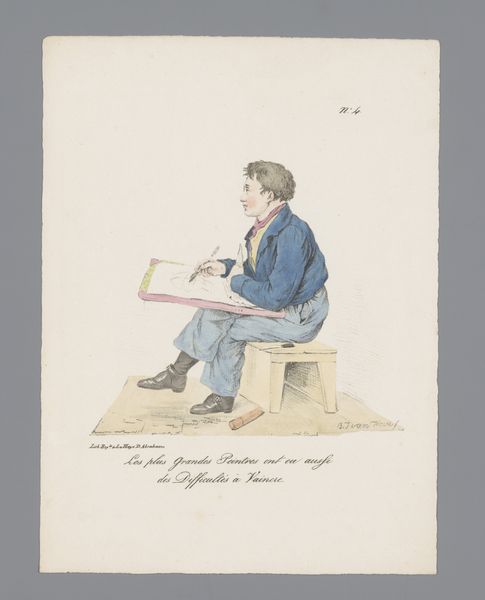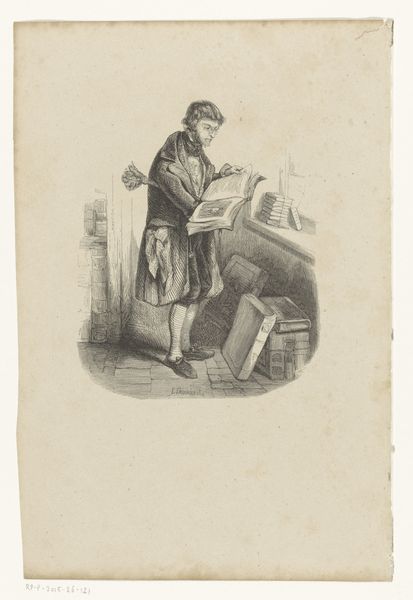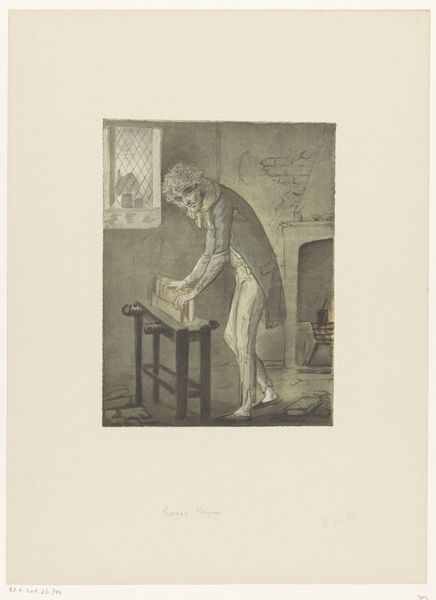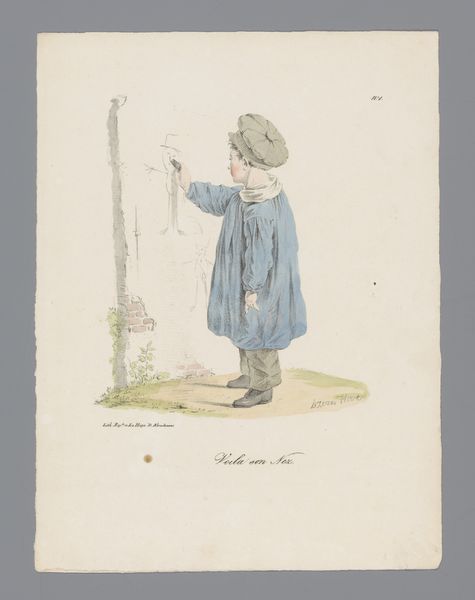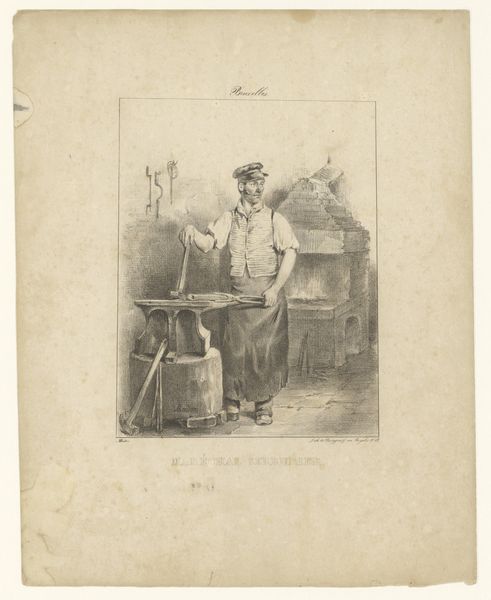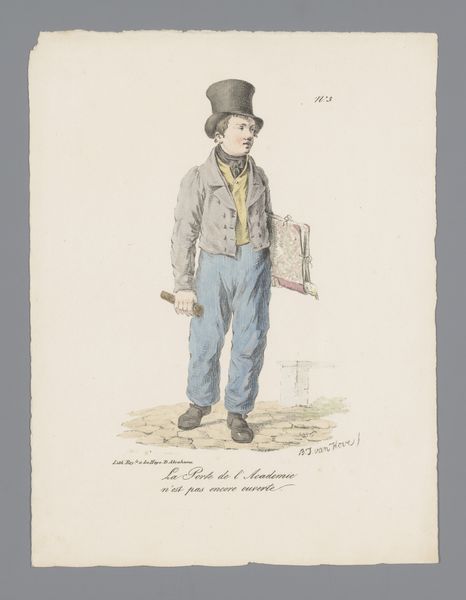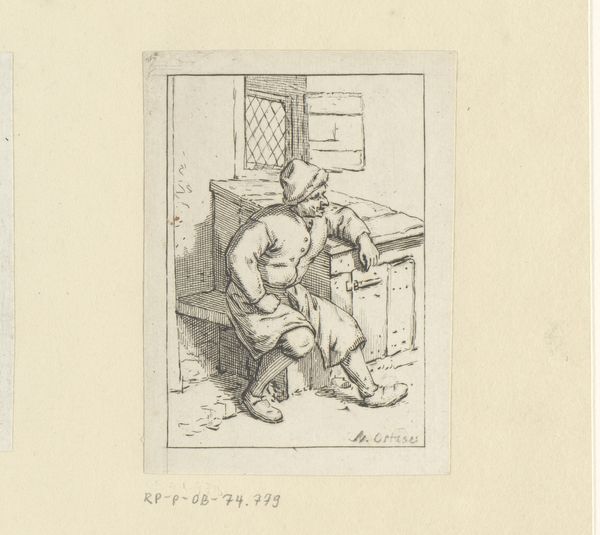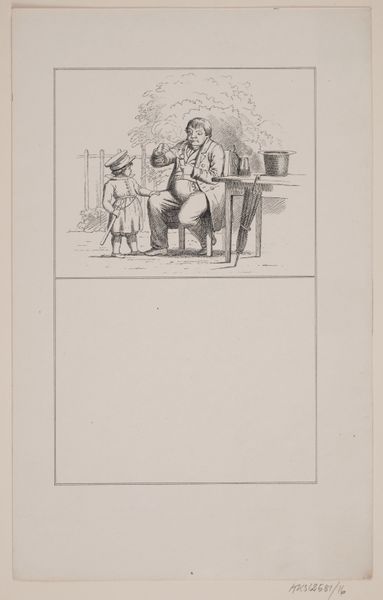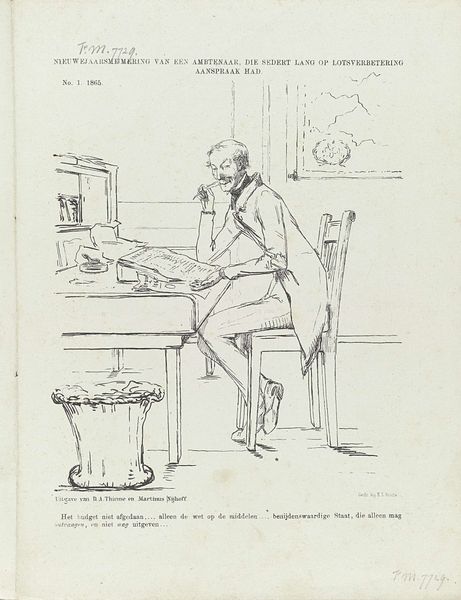
drawing, print, pen
#
drawing
#
narrative-art
# print
#
figuration
#
romanticism
#
pen
#
genre-painting
Dimensions: height 275 mm, width 220 mm
Copyright: Rijks Museum: Open Domain
Editor: This drawing, "Jongen tekent oog na" from around 1824, by Bartholomeus Johannes van Hove, feels very personal. A boy stands, diligently copying an eye. It makes me wonder, what's the story here? What do you see in it? Curator: Well, isn't that precisely the enchanting allure of such pieces? For me, the boy’s focused stance whispers of budding artistry, the nascent stages of skill taking shape. The eye he copies – a singular, almost surreal image placed on what seems a makeshift easel – it's a window to ambition. It’s a moment of quiet determination; a snapshot into art education of the time. Doesn’t the humble setting draw you into the intimacy of the lesson? Editor: Absolutely. It does seem quite rudimentary, doesn't it? Like he’s figuring things out himself. It seems at once romantic, but also lonely? Curator: Lonely, you say? Perhaps. Or is it self-sufficient? There is an intriguing tension in that solitude. It is not always necessary that every artist toils under the intense scrutiny of tutors, do they? Doesn't that almost whispered French phrase at the bottom suggest the wry wit, the kindhearted raillery, from a master artist to a student just starting his learning? Do you interpret the scene as playful, rather than sad, maybe? Editor: Playful... hmm, I hadn’t considered that. With the French phrase and his intent gaze. It makes it seem like more than just an art lesson, it’s almost like a personal challenge. It might even represent self-discovery through art? Curator: Exactly! Or maybe just an insightful exercise assigned by Van Hove himself. Art begets questions, does it not? And maybe a few answers, if you stare at them long enough. Editor: That makes the piece even more intriguing, actually! Curator: Precisely my dear, for some questions that remain in time make it a real masterpiece.
Comments
No comments
Be the first to comment and join the conversation on the ultimate creative platform.
